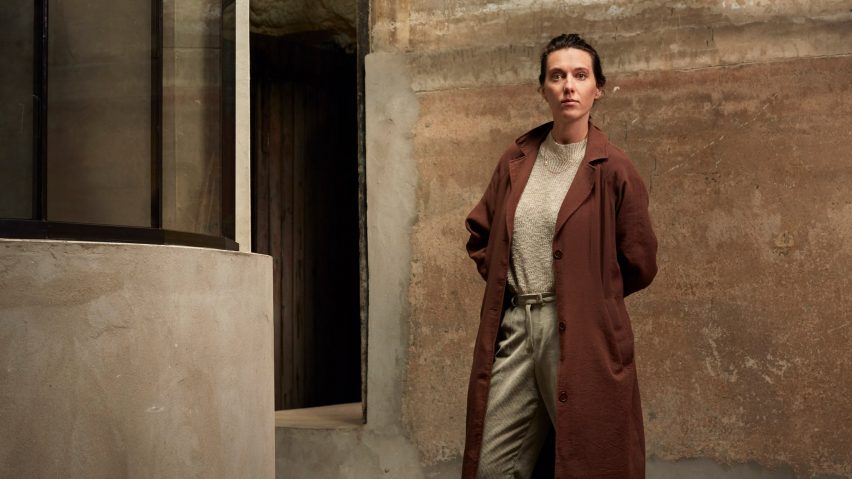Linde Freya Tangelder creates furniture pieces that combine architectural references with surprising materials. She talks Dezeen through six key projects, including tables based on Lina Bo Bardi's windows and chairs built from columns.
Belgium-based Tangelder named her studio Destroyers/Builders, because she believes that new things can only be created when others are broken down.
Many of her inspirations come from buildings and construction sites, and she also likes to combine luxury and off-the-shelf elements.
"I like the mixture of rich and poor materials," she said. "It's not something I can explain, but I like transforming something very simple into something beautiful."
"Design should be simple"
Tangelder works as a designer, but her approach is more like an artist. She often starts with an idea and only later applies a function, so her designs are highly sculptural.
"It's very intuitive," she told Dezeen. "I don't think it's strict enough to be design."
This approach means that, although Tangelder has produced some production pieces for Belgian brand Valerie Objects, the majority of her work is in the realm of collectible design. However she is keen to branch out.
"It's strange that you only work for a small number of people that can afford the pieces," she said. "Design is such a luxury job and it shouldn't be. It should be simple and for a large group of people."
Tangelder spoke to Dezeen following the news that she is Biennale Interieur's 2019 designer of the year. Here, she picks out six of her key projects:
Bolder Chair I and II
By referencing the architectural column, Tangelder gives a feeling of weightiness to her Bolder Chairs. Yet only one of the two versions is actually heavy – the first is made from chipboard and a pressed textile-fibre, while the second is limestone and brass.
"Chipboard is normally used for insulation; I thought it would be interesting to make it unrecognisable," the designer said. "It almost looks like stone."
Windows of Bo Bardi
The surfaces of these tables match the shapes of windows on the SESC Pompéia Factory in São Paulo, a building famously designed by Brazilian architect Lina Bo Bardi. They offer a subtle reference to Tangelder's own Brazilian heritage.
"I thought it would be nice to make a positive shape out of these negative windows openings," said the designer. "The function definitely came later in the development."
The tables come in lacquered wood, natural wood and concrete.
High Section
Chimneys were the inspiration for this brass shelving-system, particularly the ones found on buildings in Belgium.
"In Belgium you have a lot of chimneys in the landscape that don't have a function anymore," said Tangelder. "They're quite dominant, with this conical shape. I wanted to take this architectural remnant and give it a new function."
The piece is made from brass but, instead of a polish finished, Tangelder chose to give it a softer, brushed finish. "It becomes much lighter, much less gold," she added.
Archetyping Daybed
Tangelder produced this design while she was completing her graduate studies at Design Academy Eindhoven. It is made from pigmented chipboard, carved by hand to create its unusual texture.
"It was a really important work because it combined a form language that is very primitive with a texture that is really hand made," said the designer. "That is definitely a signature of Destroyers/Builders."
Etage Shelves
This design emerged after Tangelder was asked by a client to create a piece that could be used to store glasses. The name Etage, which means "floor" in both French and German, relates to its various levels.
The design comes in different sizes, in brass, aluminium, ash and oak.
"I like to try to get to use different materials next to each other, so you get to see their qualities even better," said Tangelder.
Brick's Reflection Chair
The humble brick was the starting point for this simple aluminium chair, which features a curved terracotta backrest.
"Brick is a key material in my work," said Tangelder. "It's related to architecture but it's also the materialisation of this open structure.
"The roughness of it, the colour of it – I like everything about it," she added.

